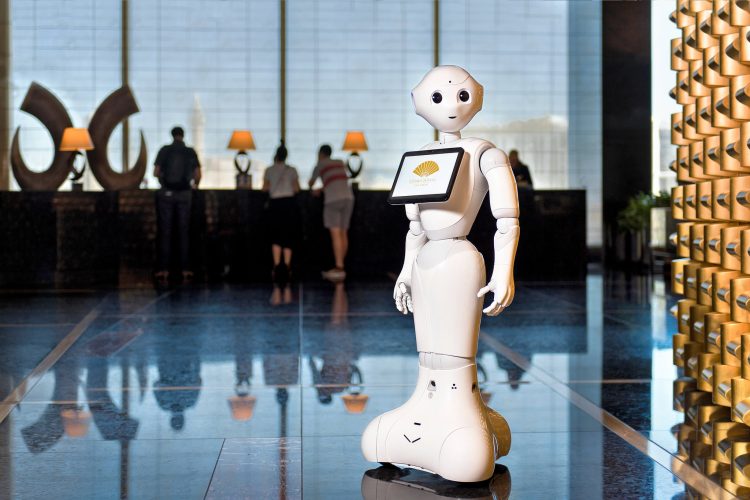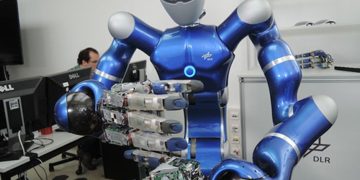Urban Robotics Today: A Global Overview
Cities around the world are rapidly integrating service robots into everyday life. From Tokyo to San Francisco, Singapore to Stockholm, autonomous machines are performing tasks once handled exclusively by humans: cleaning streets, delivering goods, assisting in healthcare, monitoring public safety, and providing companionship to residents.
The reasons are multifaceted. Increasing urban populations place pressure on infrastructure. Labor shortages in sectors like healthcare, logistics, and hospitality make robots attractive partners. Environmental concerns demand efficiency, precision, and consistency. And technological advancements—AI, sensor networks, cloud computing—have made large-scale deployment feasible.
By 2025, projections suggest that urban service robots will constitute an integral part of city ecosystems, not as novelties, but as indispensable agents maintaining societal functions.
Case Study 1: Tokyo, Japan – Precision and Reliability
Tokyo, known for its dense population and intricate urban infrastructure, has leveraged robotics for efficiency and reliability. Service robots here include autonomous street sweepers, delivery bots navigating narrow alleyways, hospital companion robots, and hotel concierge robots.
A notable example is the deployment of hospital companion robots. These robots assist nurses by monitoring patients’ vital signs, delivering medications, and even interacting socially with elderly patients to reduce loneliness. Studies indicate that patients show improved compliance with medication schedules and report decreased stress levels.
Tokyo’s urban logistics also relies heavily on autonomous delivery bots. They integrate AI pathfinding, obstacle recognition, and predictive scheduling to ensure timely delivery. By analyzing real-time traffic data and pedestrian density, these robots optimize routes dynamically, reducing congestion and energy consumption.
The societal impact is tangible. Hospital staff report increased efficiency, while citizens experience convenience and reliability. Challenges include ethical questions around privacy, emotional attachment to machines, and maintenance costs, but Tokyo demonstrates that well-integrated robotic systems can complement human labor and improve urban quality of life.
Case Study 2: Singapore – Smart City and Sustainability
Singapore has embraced service robots as part of its Smart Nation initiative. Robots operate across multiple domains: waste management, cleaning, delivery, and public engagement.
Waste-sorting robots at residential complexes demonstrate the city’s commitment to sustainability. They sort recyclables automatically, providing data for consumption patterns and recycling compliance. The efficiency reduces landfill pressure and encourages responsible environmental behavior among residents.
In retail and public transport, autonomous cleaning robots maintain hygiene standards, especially in high-traffic areas. During public health crises, such as pandemics, these robots enable continuous sanitation without exposing human workers to risk.
Social integration is a focal point. Robots are designed with friendly interfaces and personalities to facilitate human acceptance. Studies indicate that citizen trust in robots increases when machines are predictable, transparent in behavior, and culturally attuned.
Singapore highlights that service robots are not only about operational efficiency—they are tools for societal shaping, reinforcing sustainability, health, and human-robot coexistence.
Case Study 3: San Francisco, USA – Innovation and Human-Robot Interaction
In San Francisco, service robotics focuses on innovation, user experience, and experimental deployment in mixed-use urban environments. Autonomous food delivery robots navigate sidewalks alongside pedestrians, bikers, and tourists. Real-time AI adaptation enables safe interactions and reduces incidents of collision.
Hospitals and eldercare facilities experiment with companion robots, emphasizing emotional intelligence. These machines detect facial expressions and vocal tone, offering assistance, reminders, or conversation based on resident behavior. Psychological studies reveal increased feelings of companionship and reduced feelings of isolation among seniors.
The challenge lies in human-robot social acceptance. Public demonstrations often highlight machine limitations—obstacle detection failures, battery depletion, or miscommunication—but they also foster dialogue about the role of automation in daily life. San Francisco illustrates that technical innovation must coincide with social adaptation and cultural context to be effective.
Cross-City Analysis: Lessons Learned
By comparing deployments in Tokyo, Singapore, and San Francisco, several patterns emerge:
- Efficiency and Reliability: Service robots excel in repetitive, precision-based tasks, allowing humans to focus on creative, interpersonal, and supervisory roles.
- Social Acceptance: Human trust is enhanced when robots exhibit predictable behavior, transparent decision-making, and culturally sensitive interaction.
- Environmental Impact: Robots contribute to sustainability through efficient energy use, optimized logistics, and waste management.
- Challenges: Maintenance, ethical considerations, emotional attachment, and cybersecurity remain critical areas needing oversight.
Different cities prioritize different aspects: Tokyo emphasizes reliability and operational rigor, Singapore emphasizes sustainability and integration into social systems, while San Francisco emphasizes innovation and user experience. These variations underscore the importance of local context in robot deployment strategies.

Economic and Labor Considerations
Service robots are reshaping labor markets. By automating repetitive tasks in healthcare, hospitality, logistics, and urban maintenance, robots reduce operational costs and improve efficiency. However, they also raise questions about workforce displacement and skill requirements.
Humans are increasingly required to supervise, maintain, and collaborate with robots, shifting demand toward technical expertise, robotics management, and human-robot interaction design. Upskilling programs, vocational training, and regulatory frameworks are critical to ensuring that robots augment rather than replace human labor.
Economic models suggest that urban areas integrating service robots can achieve higher efficiency, reduced labor costs, and improved service quality. Yet policymakers must balance automation with social welfare, considering equitable access to employment and addressing potential inequalities.
Ethical and Psychological Dimensions
Deploying service robots introduces ethical considerations:
- Privacy: Robots equipped with cameras and sensors collect extensive data on human behavior. Secure data management and transparent privacy policies are essential.
- Attachment: Humans may develop emotional bonds with companion robots, raising questions about authenticity, dependency, and psychological impact.
- Decision-making: Autonomous machines making choices in healthcare or safety scenarios necessitate clear accountability and human oversight.
Psychologically, humans respond positively to machines that are predictable, empathetic, and culturally aligned. Cities integrating robots thoughtfully see higher citizen acceptance and trust, reducing anxiety associated with automation.
Future Directions
Service robots are entering a phase of advanced integration:
- Collaborative Robotics (Cobots): Machines working alongside humans, sharing tasks in dynamic environments.
- AI-driven Autonomy: Enhanced learning algorithms enable robots to adapt to unforeseen circumstances.
- Urban Ecosystem Mapping: Networks of robots provide real-time data for traffic, public safety, sanitation, and energy management.
- Emotional and Social Robotics: Improved AI allows more nuanced human interaction, supporting healthcare, education, and social services.
Cities of the future will likely have robotic networks invisible yet essential, functioning as the silent backbone of urban life.
Conclusion: Coexistence and Transformation
Service robots are no longer novelty items—they are integral to urban ecosystems. They optimize operations, support human welfare, and enhance safety and sustainability. The lessons from Tokyo, Singapore, and San Francisco demonstrate that technology must align with societal needs, cultural contexts, and ethical frameworks.
Human-robot collaboration is the hallmark of modern cities: efficiency, empathy, and engagement converge to create environments that are cleaner, safer, and more livable. The next decade will see the evolution of these systems into interconnected, intelligent networks, transforming not only infrastructure but also social behavior, labor, and the human experience itself.
By understanding robots not as replacements but as partners, cities can harness their potential while maintaining humanity at the center of urban life.












































